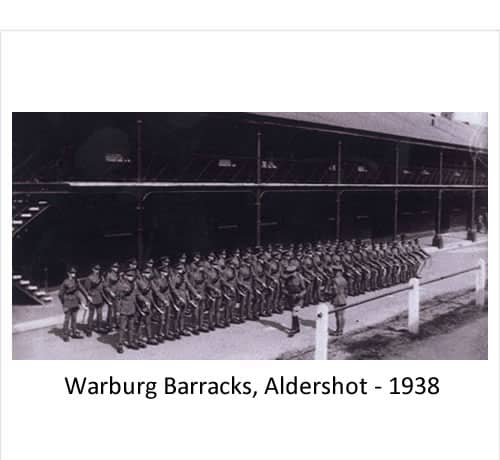John Siddon
The men shown in the photograph are assembled prior to marching onto the Regimental Parade ground, where the Commanding Officer, (Lt. Col. Scot-Coburn) would oversee the ‘Passing Out’ Parade with its vigorous inspection coupled with the various marching and sword drills etc. everything that would shine must shine.
The men until ‘Passed out’ are still classed as recruits but only until a full 12 months of training has been completed will they be classed as trained soldiers.
This intake to the Regiment was the last to be issued with ‘Pants, Puttees, Spurs, Sword, Bandolier and other associated Cavalry equipment. These men had all joined The Regiment, as I did, during the first two weeks in January 1938.
The two men in the foreground are, on the left, RMS Higgs and to his right is the Drill Sergeant, Sgt. Suddaby who in 1940 became RSM and later as I did, a POW in Stalag 18a, Wolfsburg in Karnten, Austria.
The Passing Out Parade took place in May 1938, at the end of almost 20 weeks of basic training.
The building behind the paraded men was the recruits block and underneath the Veranda were the converted Stables to Garages housing the tanks.
To the right of this building was a reasonably sized space where men who had a difference of opinion with a fellow could battle it out, with spectators offering encouragement after NCOs had made a discreet exit.
To the right of this space, there was a tall stone wall separating the Barracks from the main Street that ran alongside. The back wall of the Guardroom backed onto this space and the front of the Guardroom faced the internal barrack road.
Lastly, I must mention the huge double wooden gates opening onto the main road. The doors were always open and were ideally placed when one was on night guard, after a march up and down in front of the guardroom and during a permitted halt to push the point of the sword, always carried at the port, sharply into the wooden gates which helped to ease the pressure on a stiff right arm.
To hold the sword for an hour at the port was a long time.


